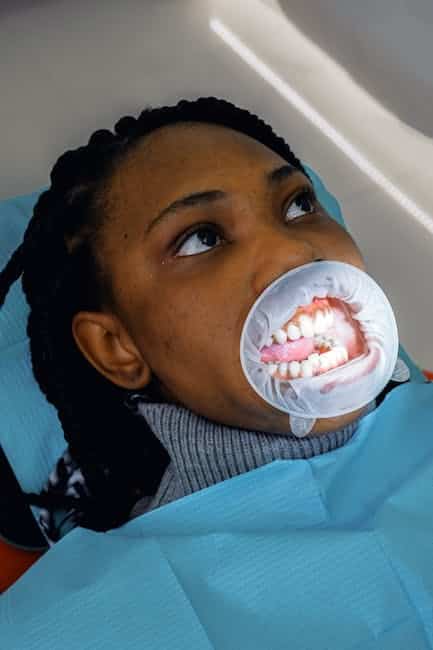The last thing anyone wants to hear is that they need invasive surgery on their teeth.
Both children and adults can suffer from uncomfortable issues with their mouths, like crowded teeth or a misaligned bite. Luckily, there are other devices that can help them fix these problems without surgery. One such device is the lower jaw expander (also known as a palate expander).
In this article, we’ll tell you everything you need to know about a palate expander so you can make an informed decision if it’s right for you.
Keep reading to learn more.
What Is a Lower Jaw Expander?
A lower jaw expander, otherwise known as a palate expander, is a device that is used to widen the narrow lower jaw. It fits right into the mouth and is positioned so that it gradually moves your jawbone apart. Although they are most commonly used for children, teenagers and adults can get them as well.
Your dentist will likely recommend a lower jaw expander if you suffer from any of the following:
- Difficulty chewing
- Crooked teeth
- Overlapping teeth
- Crowded teeth
- Impacted teeth
- A misaligned bite, such as a crossbite, overbite, underbite, or open bite
A palate expander for adults can help widen the jaw and make more space for the teeth, allowing them to fit together more comfortably. It can also help those that suffer from obstructive sleep apnea.
What Are the Different Types of Palate Expanders?
Your dentist can recommend different types of palate expanders depending on your symptoms and needs. The most commonly used ones are rapid, removable, and implant-supported. Let’s take a look at the different kinds.
Removable Palate Expander
This type of lower jaw expander for adults looks very similar to a retainer, but instead of acrylic, it is made out of chrome. These are often used in situations when the jaw only needs to be widened a little bit.
Rapid Palate Expander
This palate expander is attached to the roof of the mouth and attaches to the back teeth for stability. It comes with a special key that you turn each day to create more tension between the two palatal bones, which widens the jaw.
This device can widen the jaw by around .5 millimeters each day. Patients will usually see results in around 3 to 6 months.
Surgically Assisted Rapid Palate Expander
This type of orthodontic treatment is usually only used in severe cases for adults that have fully developed facial bones. The surgeon will install this expander where the palates meet. Like the rapid palate expander, a key is used daily to expand the jaw every day.
Implant-Supported Palate Expander
This palate expander is usually only used by teens and adults. It applies force to four implants that are installed into the mouth instead of the teeth. This allows pressure to be applied directly to the jaw.
To create this type of palate expander, your orthodontist will typically work together with a periodontist or an oral surgeon to install them.
How Can a Lower Jaw Expander Help Me?
A lower jaw expander for adults offers a variety of benefits to patients.
First, it can fix several different painful dental issues like misalignment or crowded teeth. If used early enough by children, it can prevent the need for major oral surgery later in life.
It can also be compatible with other orthodontic care devices, like headgear or braces.
At What Age Should Children Get a Palate Expander?
Although people of any age can get a lower jaw expander, it might be most effective for children. This is because children’s jawbones are still forming and developing.
Orthodontists typically recommend that children around 7 or 8 years old start wearing a palate expander. If they use a palate expander early in life, it can drastically lower the need for invasive oral surgery later in life.
Most of the time, it only takes around 2 to 3 months to achieve significant results with a palate expander for children. However, because adults already have powerful, developed jawbones, it can sometimes take up to a year.
Keep in mind that everyone has a unique situation when it comes to their jawbones. Make sure to talk to your dentist or healthcare provider to see what would work best for your situation.
Are Palate Expanders Painful or Risky?
Like most dental devices, there is some minor discomfort during the first few days. For lower jaw expanders that require a key to be turned daily, patients might feel some discomfort following the action.
It could take a little while to get used to a new palate expander. Some temporary side effects might include:
- Mild discomfort or pain
- Lisping
- Drooling
- Headaches
To reduce any pain, you can take over-the-counter pain relievers like naproxen, ibuprofen, or acetaminophen. However, palate expanders shouldn’t cause any severe pain.
In rare cases, some patients might experience anterior tooth spacing, which involves the front 12 teeth of the mouth. However, this can be corrected by your dentist or orthodontist.
Food, plaque, and other debris can also build up on the palate expander, which can lead to a bad taste and smell. Make sure that it is cleaned daily to prevent this.
Can a Lower Jaw Extender Cause Facial Changes?
No. Although these devices help widen the jaw, it doesn’t change the appearance of your facial structure.
In some cases, it might actually have a positive effect on your nose. Not only does it widen your jaw, but it also widens your nasal cavity, which can lower any nasal airflow resistance.
Get Life-Changing Orthodontic Care Today!
That’s everything you need to know about a lower jaw expander. If you’re experiencing any jawbone issues such as overcrowding or a misaligned bite, a palate expander might be just what you need to fix the problem.
If you’re ready to get a beautiful smile with a knowledgeable and trusted orthodontist, look no further. Reach out to Sencak Orthodontics today!


Recent Comments